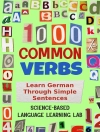Secondary ELA teachers, be excited: here at last is that crash course in utilizing the best of what we already know about teaching reading, writing, and language to ensure our English learners thrive.
Take Penny Kittle and Donalyn Miller’s reader’s workshops. Take Kylene Beers and Robert Probst’s ‘signposts.’ Take the best writing techniques advanced by the National Writing Project. Take Jim Burke’s essential questions for life. Award-winning EL authorities Mandy Stewart and Holly Genova describe immediate adaptations you can put in place to simultaneously build your ELs’ language and literacy, while affirming their languages, cultures, and unique lived experiences.
A rare blend of the humane and practical, But Does This Work with English Learners? is a book on how to leverage our ELs’ full linguistic repertoires in the ELA classroom, while remaining sensitive to those barriers that could restrict learning. With this book as your guide, you’ll learn how to:
- Look beyond the labels, and better understand the diversity of ELs, English language proficiency levels, and sociopolitical influences
- Teach and assess through reader’s workshop, recognizing where comprehensible input fits in and adapting recurring features like support, choice, conferencing, and academic conversations
- Teach and assess through writer’s workshops, including modifications to quick-writes, minilessons, conferencing, sharing, and more
- Teach through structures and community with classroom schedules and behavior norms, and activities like All About Me Paragraphs and Six Things You Need to Know About Me Listicles
- Embrace identity in inquiry cycles via research and family interviews, mentor texts and essays, pictorial autobiographies, memory paragraphs, and more
- Answer your own FAQs such as How do I teach students if I don’t know their language? What about grammar? How do I teach the grade-level ELA standards while I teach the language?
‘As you read this book, ‘ Mandy and Holly write, ‘our hope is that you will begin to see your students as multilinguals—people who already have language as well as a wealth of knowledge and are just adding English to that great repertoire.’ If you have even a single English learner in your classroom, we urge you to read this book and institute its practices. Right away!
‘Mandy Stewart and Holly Genova have given us a primer for the evolving complexities of our classroom melting pots, a map for navigating the murky waters of regulations, and most importantly, a recipe for opening our arms to children from all over the world. They welcome them with thoughts like ‘A foreign accent is a sign of bravery.’’
~Gretchen Bernabei, Coauthor of Fun-Sized Academic Writing for Serious Learning
‘After reading this book, I was left with the feeling that I learned something new on every page–something that I had previously either wondered about or struggled to understand. Mandy Stewart and Holly Genova are the guides we all need to help us understand and better address the needs of our English learners.’
~Jim Burke, Author of The English Teacher’s Companion
Inhoudsopgave
Foreword by Gretchen Bernabei
Preface
Mandy’s Teaching Story
Holly’s Teaching Story
Our Teaching Story: A Research/Practice Partnership
Our Purpose: Every ELA Teacher, a Language Teacher
Overview of the Book
Using the Book
Acknowledgments
About the authors
Chapter 1: Language Learners: Seeing Beyond the Labels
Diversity of Language Learners
Sociopolitical Influences
Second-Language Acquisition
Bilingualism and Biliteracy
Student Profiles: Meet Language Learners
Conclusion
Chapter 2: Teaching Through Reader’s Workshop
The Reader’s Workshop Model
Know Your Multilingual Students
Second-Language Acquisition Regarding Reading
Modification of Reader’s Workshop for Language Learners
Student Profiles: Meet Multilingual Readers
Conclusion
Chapter 3: Teaching Through Writer’s Workshop
The Writer’s Workshop Model
Know Your Multilingual Students
Second-Language Acquisition Regarding Writing
Modifications of Writer’s Workshop for Language Learners
Student Profiles: Meet Multilingual Writers
Conclusion
Chapter 4: Teaching Through Structures and Community
Learning Structures
Building Community: Who Am I? Who Are My Classmates?
Student Profiles: Meet Classroom Community Members
Conclusion
Chapter 5: Teaching Through Inquiry Cycles
Identity: Who Am I?
My Life, My Stories: How Am I Unique?
Student Profiles: Meet Students Who Shared and Healed
Conclusion
Chapter 6: ESL FAQ: Our Most Frequently Asked Questions as ESL Teachers
How do I teach students if I don’t speak their language?
What about grammar?
What do I do with a newcomer?
How do I continue my instructional plan when I get new students, who are also newcomers, throughout the school year?
How do I teach the grade-level ELA standards while I teach the language?
What does students’ first language have to do with the ELA classroom?
What language should students read in for independent reading time?
How do I learn about their previous educational experiences?
What is the best way to help long-term English learners (L-TELs)?
How do I incorporate culture into the classroom in an authentic way?
How do I not offend students whose culture is so different from mine?
How do I get support from students’ families?
How do I get support from my administrators and other teachers?
What if students are undocumented or underdocumented?
How do I motivate students to want to use English in and out of the classroom?
What is your favorite learning activity with language learners?
Conclusion
Get QUACKing!
Appendix A
Appendix B
Appendix C
Appendix D
Appendix E
Glossary
References
Index
Over de auteur
Mary Amanda (Mandy) Stewart is passionate about languages, literacies, and literature! She brings these areas together in her work with multilingual adolescents as they engage in critical literacy and language development across content areas using a variety of authentic texts. Viewing language learners as multilinguals, she works with them and their teachers to leverage all of their languages for success both in and out of school.Mandy is an associate professor in the Department of Literacy and Learning at Texas Woman’s University where she directs the Certificate of Biliteracy graduate program. She has published books about literacy instruction for adolescents acquiring English as well as many articles in literacy and bilingual/ESL journals. Because she believes that our work in education should lead to greater equity in society, she also writes op-eds and blogs for various media outlets about diverse literature, multilingualism, and advocacy for refugee and (im)migrant families.Born and raised in small-town East Texas, she now lives in the Dallas/Fort Worth area where she leads an ESL book club for adults, attempts to raise bilingual children, and moonlights as an intense baseball/soccer mom.Please contact your Professional Learning Advisor for consulting services.












